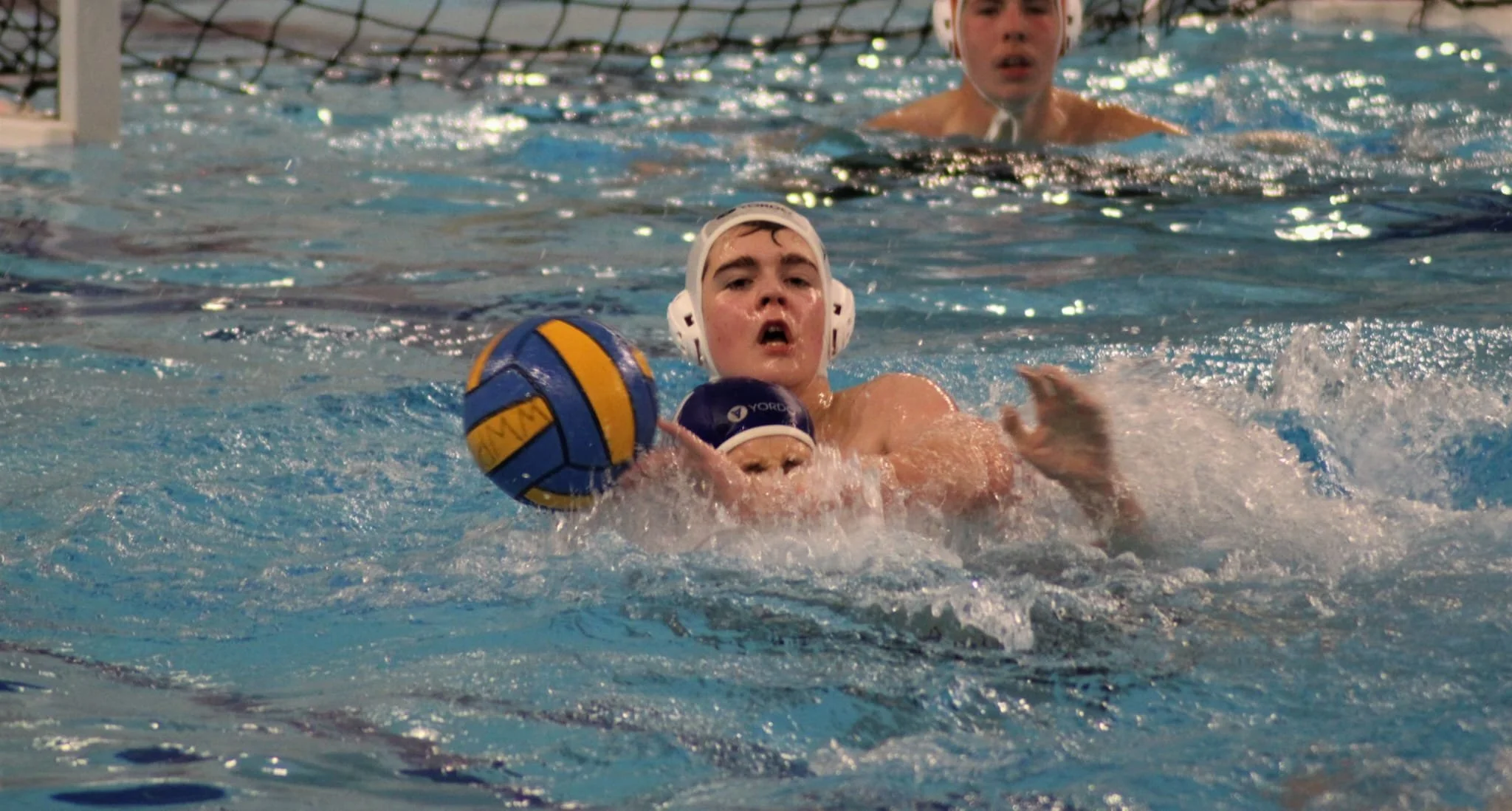Water polo is two teams, made up of seven players, who work together to score goals against the opposing team. Put simply, there are goals at each end of the pool and the winning team is the team that scores the most goals. A goal is where the ball goes between the posts of the opposing team.
TEAMS
Each team has seven players made up of six ‘outfield’ players and a goalkeeper. There are no fixed positions except for the goalkeeper - you’ll see players moving continuously around the pool looking to find a weak spot or play an advantage.
THE BASICS
Players cannot touch the bottom of the pool at any time - treading water throughout the match. Players use a movement called ‘egg-beater’ which is more efficient (i.e. less exhausting!) than the normal effort required to tread water. We encourage you to Google it!
Players move the ball by throwing it to a teammate, or swimming while pushing the ball in front of them. The six outfield players can only hold the ball with one hand, whereas the goalkeeper can use both hands.
Water polo players need extraordinary stamina, as it takes considerable energy to hold and push the ball - without touching the bottom of the pool - for the whole game. It’s a fast game, a lot happens in a short space of time, and can be draining. This is why teams have a maximum of six substitutes to balance ability, resilience, stamina, and speed. What we’re saying is, it’s a great workout…
GAME TIME
Water polo follows the rules set by the Federation Internationale de Natation (FINA). According to FINA rules, the game is divided into quarters. Each of the quarters is eight minutes long. When the ball isn’t in play the clock is stopped, so a realistic timeframe for a quarter is closer to 12 minutes. Each team can hold onto the ball for a maximum of 30 seconds before shooting for the goal. If they go over time, possession automatically passes to the opposing team.
PHYSICALITY
Water polo is known to be a physically demanding sport with players jockeying for position, aiming to knock the ball out of the opposing team’s hands, and flat-out stealing the ball. That said, it’s important to know that overly aggressive, or foul play, is against the rules. If you intend to injure a player, you’ll suffer the consequences. Safety is extremely important.
There are many examples of foul play and they include committing a foul in order to stop a player shooting for the goal, stopping another player even if they haven’t got the ball, and grabbing a player. These are against the rules and carry a penalty.
A player caught committing a major foul is asked to leave the pool for 20 seconds. If the same player commits three fouls they must sit out the entire match.Examples of major fouls include ‘sinking’ (dunking) another player, swimming over another player, or preventing another player from swimming.


